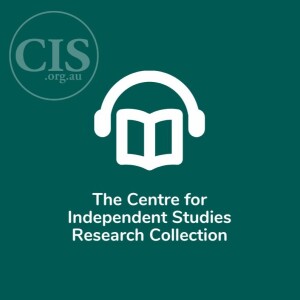
Tuesday Aug 15, 2023
Starting off on the wrong foot: How to improve Initial Teacher Education in Australia | Glenn Fahey & Rob Joseph
Starting off on the wrong foot: How to improve Initial Teacher Education in Australia by Glenn Fahey and Rob Joseph.
Read the paper here: https://www.cis.org.au/publication/starting-off-on-the-wrong-foot-how-to-improve-initial-teacher-education-in-australia/
Initial teacher education (ITE) is responsible for providing beginning teachers with the knowledge, skills, and characteristics to prepare them for the classroom. Typically, ITE involves beginning teachers enrolling and completing an undergraduate or postgraduate degree at a university by an approved ITE provider. In an ITE course, preservice teachers complete a combination of courses that include pedagogical, subject matter, and — where applicable — subject-particular pedagogical knowledge. Enrolments are typically for either primary or secondary education.
As at 2019, there were 367 programs, 48 ITE providers, and 91 locations preparing around 92,000 enrolled ITE students across Australia. Teaching graduates typically complete a standalone Bachelor of Education, or complete an undergraduate degree followed by a teaching course. Others pursue two-year postgraduate teaching degrees, with 39% of graduating teachers having completed a postgraduate degree, while some jurisdictions permit partially shortened postgraduate qualifications.
Over recent years, Australia’s ITE sector has been under near-constant review. At least in part, this has been due to persistent concern about the preparedness of graduate teachers, along with broader challenges in ensuring there is a sufficient quantity and quality of graduates to meet workforce needs.
While it’s true that graduate teachers in all school systems are less effective when they first enter the workforce than they are a few years later, most enjoy a steep learning curve over their first few years in the classroom. Given that direct supervision of early career teachers is more limited than is typically observed in other professions, this requires considerable preparation for independent practice to be provided during initial training before entering the workplace.
Mitigating the ‘novice penalty’ of graduate teachers is an important opportunity to ensure better outcomes for students, as well as reducing the considerable pressure on teachers in their early years. Moreover, evidence shows that teachers who start out being relatively effective when they graduate become increasingly more effective over time.
Altogether, this makes raising classroom-readiness of teaching graduates a priority across school systems. But while this concern about classroom-readiness is a preoccupation of many countries’ ITE sectors, there’s evidence that Australia’s school systems have particularly underperformed in this area, especially in the formative area of classroom and behaviour management.
Against this context, this paper provides a detailed analysis of Australia’s ITE sector’s current challenges and opportunities for reform. It starts with a review of the recent history and policy developments in Australia and comparable countries. It is then followed by analysis of the performance and structure of Australia’s ITE sector. In considering the ITE pipeline, it follows with assessment of the drivers of both the commencements to, and completions from, ITE qualifications. It then examines the current content of ITE qualifications and options for improving the accountability of Australia’s ITE providers. The paper concludes with recommendations for Australian policymakers in undertaking ITE sector reform.
https://linktr.ee/centreforindependentstudies
No comments yet. Be the first to say something!